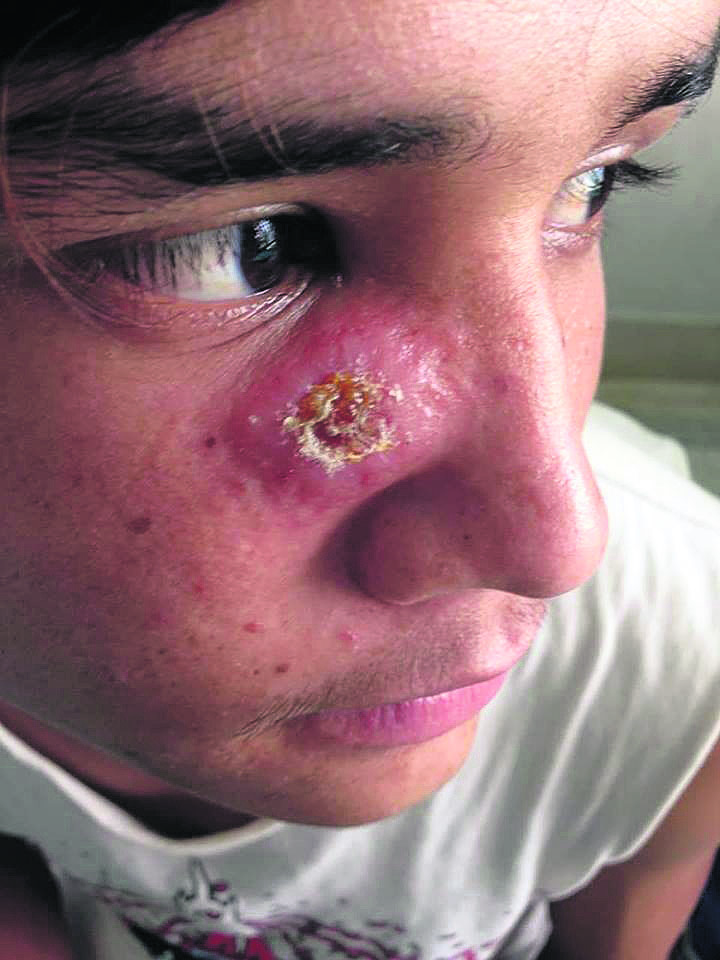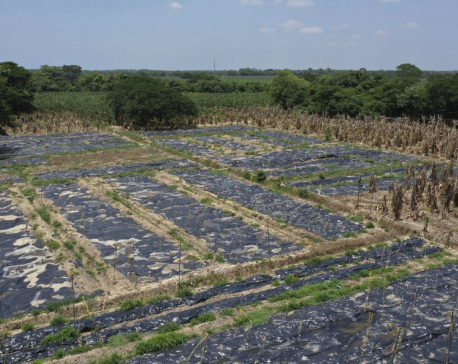
OR
Not enough research on Kala-azar: Experts
Published On: February 5, 2019 08:20 AM NPT By: Keshav Rana

KOHALPUR, Feb 5: Visceral Leishmaniasis, locally known as kala-azar, was once a very common disease in Tarai. This life threatening disease is caused by the bite of infected sand flies. Continuous fever, enlarged liver and spleen, weakness, bleeding among others are the symptoms of this deadly infection. Although, people are aware about the fact that Leishmaniasis affects the internal organs but not many know that it also affects the skin.
Nowadays, kala-azar is spreading significantly in western Nepal and is mostly affecting the facial skin of patients. It causes normal skin rashes, which are painless and non-itchy. "It is usually seen in the nose area," said Dr Sumit Pandey, Dermatologist at Nepalgunj Medical College, adding, "It cannot be cured if it is not treated before three or six months in some cases."
According to him, kala-azar affecting the skin is very rare. He informed Republica that this cannot be identified until a sample of the infected part of the skin is examined. It can also be identified through blood tests.
Five years ago, Dr Pandey examined two patients with skin-affecting kala-azar while working at Tribhuvan University Teaching Hospital. After coming to Nepalgunj, he has treated 25 such patients over the last five years.
The treatment of skin-affecting kala-azar is very difficult as it is very rare. According to Dr Pandey, the government has not been able to provide any kind of medicine for this illness so far. "Though the medicine for kala-azar is distributed for free at Shukraraj Tropical and Infectious Diseases Hospital but it is found nowhere in western Nepal," said Dr. Pandey.
Dr Badri Chapagain, a dermatologist at Bheri Hospital, Nepalgunj, says even the skin disease experts have different opinions regarding kala-azar. According to him, there is not enough research on skin-affecting kala-azar. But he claims that such cases have been cured by alternative treatments.
Kala-azar, which once was common only in Tarai is now found in the hills and mountains as well. "This infection is common in warm places but this has also been seen among the locals of Pyuthan, Rolpa, Jajarkot, Rukum, Darchula, Dolpa among others," said Dr Pandey. He assumes it could be because of the global warming.
You May Like This

Amazon confirms two employees in Italy have contracted coronavirus
WASHINGTON, March 2: Amazon.com Inc said late on Sunday that two employees in Milan, Italy, have contracted the coronavirus and... Read More...

Banana industry on alert after disease arrives in Colombia
LA GUAJIRA, Aug 26: It might not be obvious at the supermarket, but the banana industry is fighting to protect... Read More...

Complete education, full health could double Nepal's GDP per capita: WB
KATHMANDU, June 7: Nepal has the potential to double its Gross Domestic Product (GDP) per capita in the long run if... Read More...








Just In
- Govt receives 1,658 proposals for startup loans; Minimum of 50 points required for eligibility
- Unified Socialist leader Sodari appointed Sudurpaschim CM
- One Nepali dies in UAE flood
- Madhesh Province CM Yadav expands cabinet
- 12-hour OPD service at Damauli Hospital from Thursday
- Lawmaker Dr Sharma provides Rs 2 million to children's hospital
- BFIs' lending to private sector increases by only 4.3 percent to Rs 5.087 trillion in first eight months of current FY
- NEPSE nosedives 19.56 points; daily turnover falls to Rs 2.09 billion











Leave A Comment